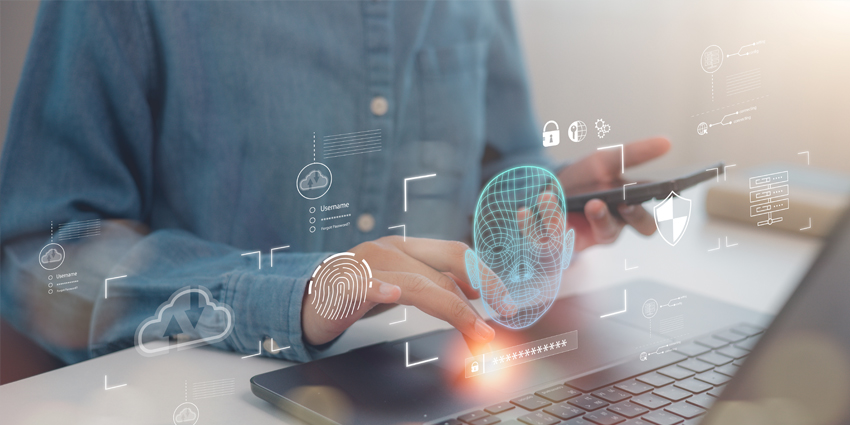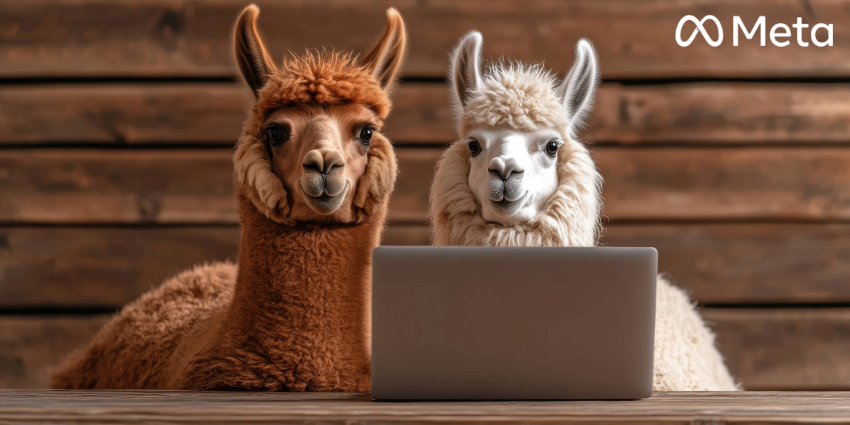Fears about AI job displacement have been around for as long as companies have been exploring ways to automate tasks – so pretty much forever. From the first mechanical looms to modern-day assembly lines, workers have watched new machines and software emerge, each time asking: “Will this be the thing that takes my job?”
Now, amid a rapid expansion of advanced AI capabilities, we’re facing that question on an entirely different scale. We’re not just worrying about bots taking over tedious tasks anymore. AI tools are handling more and more previously human-centric tasks, from content creation and design to teaching, research – you name it.
In March 2025, Anthropic’s CEO suggested that within a year – AI will be writing almost 100% of code – causing plenty of programmers to sweat. Earlier in February, Anthropic also released research suggesting that 43.6% of current AI applications can already directly replace human workers.
It’s not just software programs causing concerns either. Companies like Figure, Tesla, and Meta are creating more diverse humanoid robots that can even take over the tasks that used to require a physical human being – like serving customers drinks, or managing inventory.
So where does that leave us? Are we on the verge of an employment crisis? The simple answer: probably not – but let’s break down the facts, so you can decide for yourself.
The AI Job Displacement Fear: Why Anxiety is Growing
First, let’s talk about why the threat of bots “taking our jobs” suddenly seems bigger than ever. We’ve been talking about robots “potentially” taking over for ages. The trouble is, the market is evolving a lot faster than most of us expected.
A perfect example is Anthropic, which was founded only four years ago and has since raised $3.5 billion, tripling its valuation to more than $61 billion. Investors aren’t dropping that kind of cash for a gimmick. Their faith stems from Anthropic’s impressive generative AI platform, Claude, which (among other capabilities) can do tasks ranging from writing complex paragraphs to drafting lines of code – tasks usually reserved for humans.
The more AI models evolve, the more roles they can potentially take over. AI companies aren’t just creating models that handle trivial tasks anymore. They’re producing tools, and agentic AI systems that can actually replicate the roles of high-paid workers.
We’ve got Zora AI for Finance, created by Deloitte, that can produce financial reports in a fraction of the time of human workers. Then there’s Microsoft’s new “Dragon” AI assistant, that can handle the tangled web of hospital documentation – cutting down administrative work.
Sure, right now, these tools claim to be designed to “augment” employees – reducing the repetitive tasks they don’t really want to do. But soon, thanks to companies like Figure – now mass-producing humanoid robots, we’ll have robots that can use these software systems to physically step into the roles of all kinds of employees.
Already humanoid bots are handling things like serving customer drinks, and delivering remote care to elderly people – so what’s to stop them from taking on other roles too?
The Case for Widespread Job Displacement
Ultimately, we don’t actually believe that AI is going to “take our jobs” – at least not completely. But there is a case for some serious job displacement in the current market. Let’s look at the arguments:
The Economic Incentives of Automation
Money talks, right? One huge reason jobs might vanish is that AI can operate 24/7 without demanding overtime pay, taking vacation, or asking for health insurance. As soon as AI gets good enough to do a human’s job reliably, there’s a strong financial temptation to swap humans out.
Deploying a tool like ChatGPT or Claude to create content or write code is already a lot cheaper than hiring a professional. We’ve even got a growing number of tools that can create hyper-realistic videos, images, and designs that previously demanded human creativity – like Sora and Wan.
When AI humanoid robots enter the workforce – they might be more expensive upfront – but they could potentially cost a lot less in the long term. A Morgan Stanley report even suggested a $50,000 robot could save a company around $500,000 over 20 years – compared to hiring a low-wage worker.
AI Capabilities: Matching and Exceeding Humans
In the past, big revolutions – like mechanized agriculture – rolled out over decades, giving society time to (sort of) adapt. AI is compressing that timeline dramatically. It’s only been a few years and we’ve gone from AI solutions that can just follow rules, to systems that can set goals and complete multi-stage tasks completely autonomously.
AI agents are already matching (or even exceeding) human beings in tasks related to things like data analysis, and high-scale customer service. They’re also doing a “good enough” job in many roles (like writing and programming) that most companies are happy to replace otherwise highly-paid human employees with bots – even if they struggle with a few things.
AI is already rapidly taking over countless tasks, from producing legal briefs to creating complex machinery parts. Look at Figure’s 03 robot. It can make a part that used to take over a week in less than 20 seconds. Plus, we’re entering a world where it’s easier than ever for people to create customized bots that can do just about anything.
Microsoft, Salesforce, and now OpenAI have released straightforward agent-building toolkits that allow anyone to create a custom bot. There’s really no “barrier” to building the perfect augmented employee anymore.
History Repeats Itself: Technology Creates Change
It might help to remember that entire job categories have vanished before. Think about telephone switchboard operators – once a huge field, gone almost entirely because of automated switching. Typesetters in the printing industry used to be in high demand; nowadays, software tools do all that formatting.
Even something like the elevator operator – no longer a staple of city life, replaced by simple push-button panels. In each case, advancements in machinery and software made it easier (and cheaper) for companies to automate away human tasks.
This issue is made even worse by the fact that there’s a huge gap between how fast AI is improving, and how slowly the labor market is adapting. Historically, when new tech arrives, workers eventually shift to new roles. But if AI becomes competent in tasks faster than we can train displaced workers, entire sections of the labor force might struggle.
The fact that AI can learn on the job – often from data produced by human workers—supercharges its progress. If it takes six months for an AI to go from 80% accuracy to 99% accuracy, does that leave enough time for thousands of humans doing that same job to learn something else?
Some predict an urgent need for retraining programs, but governments and corporations historically haven’t moved at breakneck speeds. This mismatch leaves us with a real possibility: by the time large-scale “reskilling” efforts get rolling, AI may have already mastered the tasks in question, making it extremely tough for displaced workers to find similar jobs in the new environment.
The Case Against the Job Apocalypse
Now let’s swing to the other side of the debate. Not everyone thinks we’re doomed to be replaced by machines. In fact, many see a pattern that’s played out historically: new technology arrives, old jobs vanish, but new and sometimes better ones appear.
Way back in 2020, the World Economic Forum even shared their opinion that the robot revolution would create around 97 million new jobs. So, let’s look at the case for AI augmenting, or changing – but not wiping out the workforce:
The Focus on Augmenting Humans, Not Replacing Them
Examine most of the innovative AI solutions in the market today, and you’ll notice a trend. Virtually every vendor claims their AI solution is here to support workers – not replace them. For instance, Microsoft’s Dragon Copilot helps doctors complete administrative tasks more quickly so they can spend more time in face-to-face patient care.
Similarly, Cisco’s Agentic AI portfolio is designed to empower customer service and sales teams – rather than pushing them out of the door. In fact, there are examples of AI augmenting, rather than replacing workers in every industry. In healthcare, AI tools are sifting through data and speeding up diagnostics, to help experts focus on delivering treatment.
In retail, AI might help customers pick products, or complete purchases, but human reps are still the ones building relationships with customers, or helping them with complex issues.
Some AI innovators, like Anthropic, actively encourage organizations to avoid relying too heavily on AI for everything. For now, it seems like many business leaders are paying attention. They still need employees that excel in things AI can’t (yet) match – like emotional intelligence, which takes us to our next point.
Humans Still Have an Advantage (In Some Areas)
For all the talk about AI’s rapid progress, there are some things it can’t yet replicate convincingly – or at least not at a level that fully satisfies us as human beings. AI might be growing more creative – but true creative genius involves lateral thinking, emotional nuance, or drawing inspiration from deeply personal life experiences. While AI can remix existing content impressively, genuine originality or brilliant leaps of intuition remain human territory.
Beyond creativity – we humans have empathy and emotional intelligence. People often prefer talking to a real human being when they’re upset or have complicated questions. A chatbot might simulate empathy with scripted phrases, but it doesn’t feel compassion.
In healthcare, mental health, social work, or customer service, that lack of genuine emotional intelligence can be a deal-breaker. Companies like Gartner even predict that the EU will mandate a “right to speak to a human” in the future, so going all-in on AI won’t be an option.
Then there are things like judgement and ethics to think about too. AI can look at large data sets and recommend actions, but it can’t understand cultural context, moral grey areas, or ethical priorities the way a human leader or professional can. That’s one of the reasons why many compliance and regulatory standards prevent the use of AI for things like court case judgements and rulings.
Technical Limitations (AI Still has Hurdles)
Despite rapid improvements in models and machines, AI still stumbles with a lot of things. Large Language Models (LLMs) can be impressive, but they still produce “hallucinations.” We’ve seen plenty of examples of generative AI tools producing text and content that’s just plain wrong.
There’s also been countless examples of AI image generators producing bizarre or unusual images. Even if AI continues to improve at an incredible rate – there’s still a need for human oversight to protect against issues like the spread of misinformation, or serious mistakes.
In the robotics space, humanoid robots are becoming more impressive and flexible. Unitree’s G1 bot is one of the fastest humanoid robots ever created – but it’s not about to join the Premier League. In fact, most bots still struggle with precision and dexterity.
Even if we could create a robot that’s capable of replicating the movements of human beings – there’s a good chance it would be prohibitively expensive. Bots like that cost a lot to build, train, and maintain – it’s just not feasible to buy enough to replace a whole workforce.
Plus, as mentioned above, if a company could afford to create a robotic workforce – there’s a good chance their customers wouldn’t be happy with it. People still want human interaction – particularly when it comes to dealing with sensitive things like health or finance. Many of us don’t even trust AI to handle basic things fully. How often do you double-check the calculations of a bot?
History (Still) Repeats Itself
We mentioned above that entire categories of jobs have been replaced by technology in the past. But focusing on that means ignoring the fact that technology also creates new roles. Every major technological revolution, from the printing press to the internet, has destroyed some jobs but, usually, it creates new opportunities too.
Take the Industrial Revolution: it put some artisans out of business but gave birth to entirely new industries – factories, distribution networks, engineering roles, etc. The digital revolution saw plenty of clerical and administrative roles fade but created web designers, software engineers, social media managers, data scientists, and copywriters.
AI could follow the same pattern – and for the most part – it already is. Without the AI revolution, we wouldn’t have new roles like AI product managers, research scientists, ethics officers, and cybersecurity analysts. New AI systems will require new trainers, developers, and compliance experts. Even new humanoid robots will need new types of mechanics.
Plus, there’ll be a growing need to hire employees for the work AI still can’t do – like hands-on jobs (hairstyling and physical therapy), roles that require emotional intelligence, and jobs that demand higher levels of creativity than AI can mimic.
AI Will Change Jobs: But It Won’t Replace Them
Ultimately, there’s no arguing with the fact that AI is going to have a transformational impact on the job market -in just about every field. AI systems are just going to become more advanced, more accessible, and more capable of completing the tasks usually reserved for humans. That’s a fact.
Some jobs and sectors will see more disruption than others. Software development is clearly going to become more automated. Editing, content creation, and various other high-paying roles might be deeply augmented by AI – simply because employers want to cut costs.
As robotic systems evolve, a lot of manufacturing and industrial jobs will change too – as companies rely less on humans to handle manual and time-consuming tasks. But at least right now – AI won’t necessarily replace the need for humans – it’ll just change the things we do each day.
We’ll definitely spend less time on repetitive and monotonous tasks, and we’ll need to focus more of our attention on creative complex processes that are harder for AI to replicate.
How Quickly Will the Shift Happen?
This is a million-dollar question. How quickly will things change? Well, ultimately, they’re already changing. Based on what we know right now, about AI’s evolving capabilities, as well as the continuing focus on “amplifying” rather than “replacing humans, we can predict a basic timeline:
- Short-Term (1-3 years): AI will take over human tasks in areas where it already excels – like writing product descriptions, or dealing with data entry. However, everyone won’t get fired overnight. We’re more likely to see human-AI hybrid models become more common.
- Mid-Term (3-10 years): As AI skill sets broaden, it’ll begin to complete more complex tasks, like drafting legal documents and managing supply chain. Paralegals, project managers, and some other professionals might feel the squeeze. However, new roles will start popping up, like “algorithm auditor” or “AI compliance manager.”
- Long-Term (10+ years): AI may be advanced enough to handle more complex human roles, but society may have reorganized its focus on an AI-augmented workforce, with shorter work weeks, or new concepts of labor.
Overall, everyone is going to need to prepare for some major changes – and soon. Individuals will need to focus on developing more human skills, staying “tech-savvy” to collaborate with bots, and embracing lifelong learning. Organizations will need to take a cautious approach to finding ways to augment employees with AI, upskilling their staff, and introducing new roles.
On a broader scale, policymakers and governments will need to rethink how the world is going to operate in an environment enhanced by AI. We might see new regulations emerging to minimize job displacement, tax reforms to make hiring humans more attractive, or new educational programs.
AI Job Displacement: The Bumpy Road Ahead
So, will AI replace our jobs, enhance them, or both? Basically – the answer seems to be “both”. Some jobs will be replaced – particularly if they involve a lot of routine tasks AI can easily master. Others will be “augmented,” where the AI does 60–70% of the grunt work, and a human finishes it. Meanwhile, brand-new job categories will begin to appear.
The trick is figuring out how to manage the transition. If we approach this transition poorly, we might see mass unemployment, and economic turmoil. If we go forward cautiously – investing in people, encouraging synergy, and reimagining how we value labor, we could unlock an era where humans can focus on more creative endeavors, and spend less time on drudgery.
As Anthropic’s Dario Amodei said, we all start need to considering the possibility of “crazy things” now, rather than waiting for disruption to just fall on us. Technology doesn’t dictate our future – our choices do. We can build AI systems that treat workers like disposable cogs, or we can treat them as creative, essential partners.
Whichever path we take, the short answer is that AI will absolutely change our jobs. Whether it’s for better or worse depends on how we plan, adapt, and collaborate. Let’s make the most of it, shall we?







